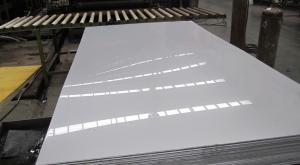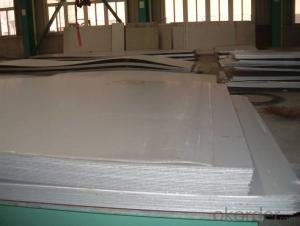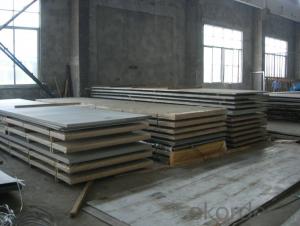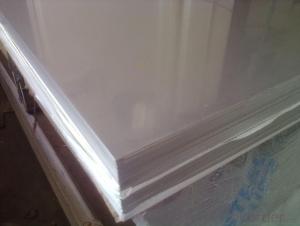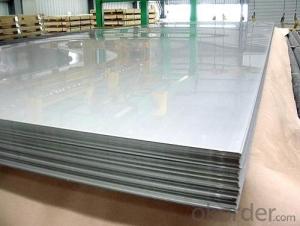Stainless Steel Sheet with 3mm Thickness
- Loading Port:
- Shanghai
- Payment Terms:
- TT or LC
- Min Order Qty:
- 2000 m.t
- Supply Capability:
- 5000000 m.t/month
OKorder Service Pledge
OKorder Financial Service
You Might Also Like
Stainless Steel Sheet with 3mm Thickness
Description of Stainless Steel Sheet with 3mm Thickness:
Stainless steel is a production which not easy rust,acid resistance and corrosion resistance,so it is widelyused in light industry,heavy industry,daily necessities and the decoration industry.my company long-termsupply stainless steel porducts including:stainless steel sheet,stainless steel coil and stainless steel tube.
Main Features of Stainless Steel Sheet with 3mm Thickness:
•Escalator, Elevator, Doors
•Furniture
•Production tools, Kitchen appliances, freezers, cold rooms
•Auto Parts
•Machinery and Packaging
•Equipment and Medical devices
•Transport system
Maintance of Stainless Steel Sheet with 3mm Thickness:
(1) Regular cleaning and maintenance
(2) Pay attention to prevent the occurrence of the phenomenon of surface scratches
(3) Use soap, weak detergent or warm water to remove surface dust, dirt
(4) In addition to the surface of the binder with alcohol or an organic solvent (ether, benzene)
(5) Use neutral detergent or ammonia solution in addition to surface oil
(6) With 10% nitric acid or abrasive detergent in addition to the surface of the embroider caused by the dirt.
Applications of Stainless Steel Sheet with 3mm Thickness:
Stainless steel’s resistance to corrosion and staining, low maintenance and familiar lustre make it an ideal material for many applications. There are over 150 grades of stainless steel, of which fifteen are most commonly used. The alloy is milled into coils, sheets, plates, bars, wire, and tubing to be used in cookware, cutlery, household hardware, surgical instruments, major appliances, industrial equipment Storage tanks and tankers used to transport orange juice and other food are often made of stainless steel, because of its corrosion resistance and antibacterial properties. This also influences its use in commercial kitchens and food processing plants, as it can be steamcleaned and sterilized and does not need paint or other surface finishes..
Specifications of Stainless Steel Sheet with 3mm Thickness:
Description | steel sheet,hot rolled steel sheet,cold rolled steel sheet, steel sheet,sheet,steel plate |
Standard | ASME, ASTM, EN ,BS,GB,DIN, JIS etc |
Application | Steel sheet applies to construction field, ships building industry, petroleum & chemical industries, war and electricity industries, food processing and medical industry, boiler heat exchanger, machinery and hardware fields. |
Packaging | Standard export sea-worthy packing |
Delivery time | 10-30 days |
Quality | No.1 |
Productivity | 500 tons/Day |
Note | Our company has cooperative relation between the domestic agents. Stainless steel sheet can be made accordingto the customers requirements. Fasten delivery. Quality assured. |
Contacts | If you have any question,please feel free contact me. |
Surface Finish Characteristics of Stainless Steel Sheet with 3mm Thickness:
| Surface finish | Characteristics and application |
| 2B | The surface brightness and flatness of no2B is better than no2D. then through a special surface treatment to improve its mechanical properties,No2B could nearly satisfy comprehensive uses. |
| No.1 | Polished with abrasive belt of grit#100-#200, have better brightness with discontinuous coarse stria, used as inner and external ornaments for building, electrical appliances and kitchen utensils etc. |
| No.4 | Polished with abrasive belt of grit #150-#180,have better brightness with discontinuous coarse stria, but thinner than No3, are used as bathtub buildings inner and external ornaments electrical appliances kitchen utensils and food processing equipment etc. |
| HL | Polished with abrasive belt of grit #150-#320 on the NO.4 finish and has continuous streaks, mainly used as buildings ornaments elevators, door of building, frontal plate etc. |
| BA | Cold rolled, bright annealed and skin-passed, the product have excellent brightness and good reflexivity like mirror, kitchen apparatus, ornament etc. |
| 8K | The product have excellent brightness and prefer reflexivity can to be the mirror. |
Images of Stainless Steel Sheet with 3mm Thickness:
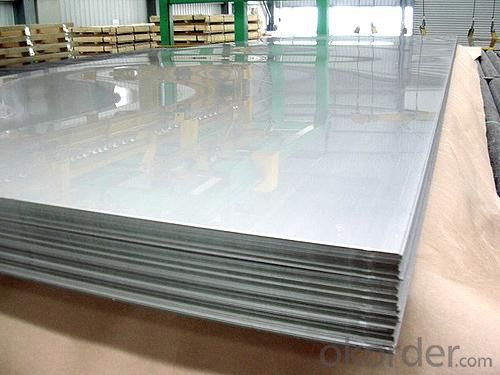
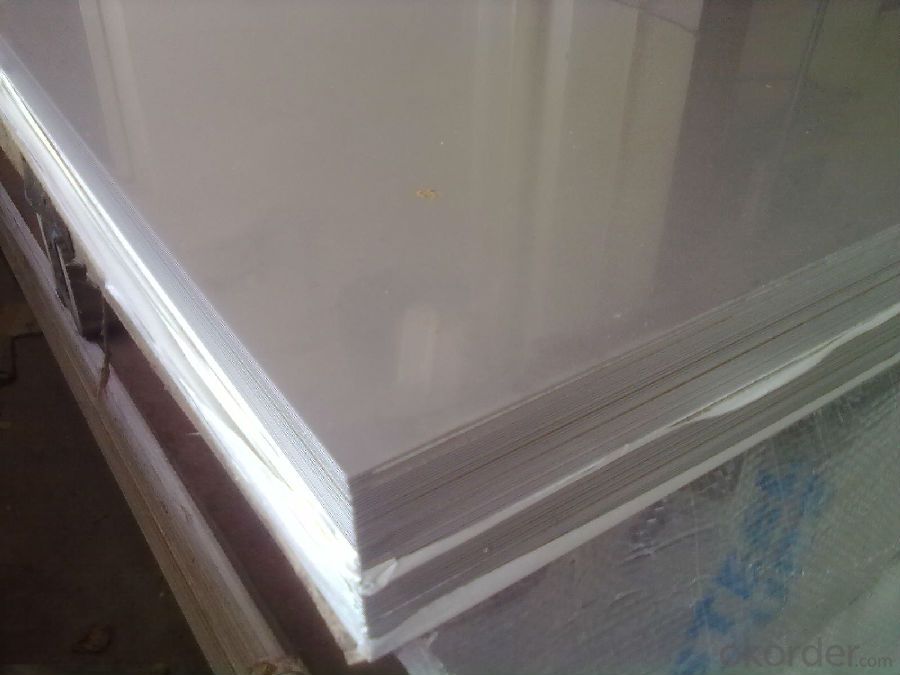
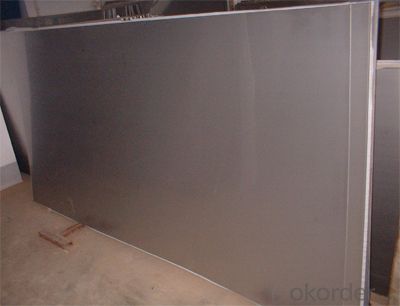
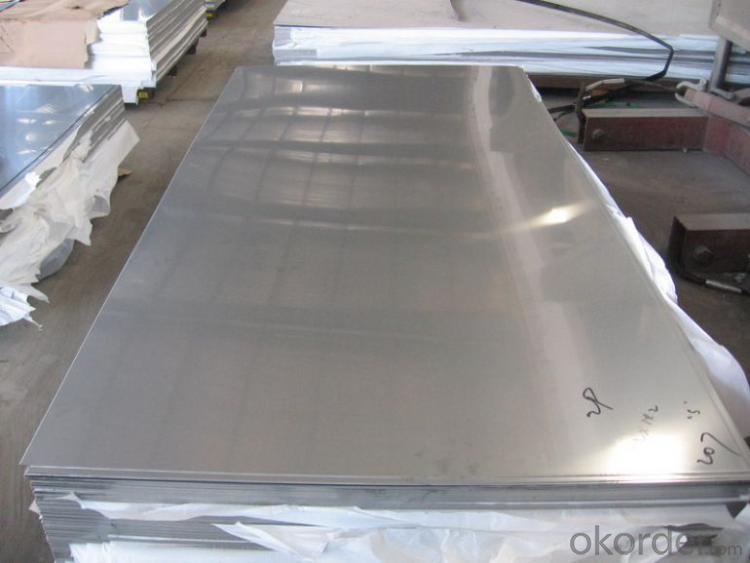
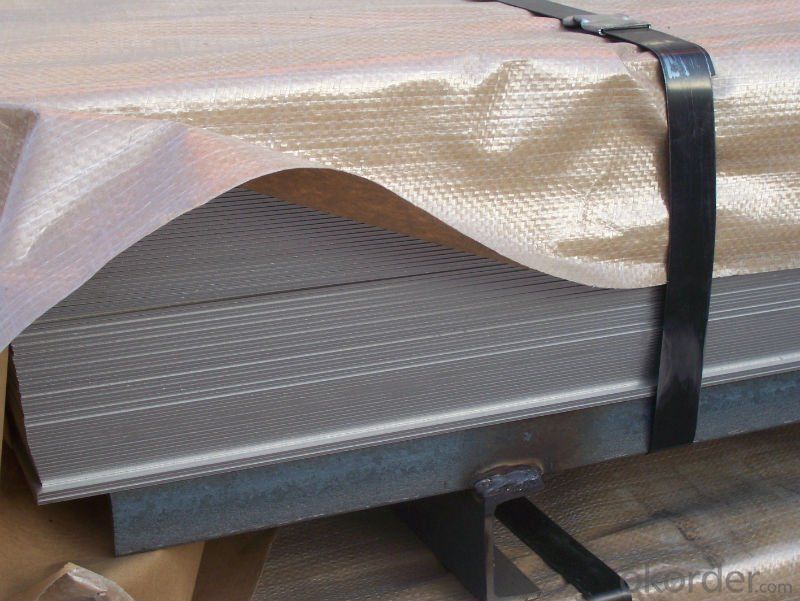
Sandard Seaworth Packing(wooden packing with water proof paper):
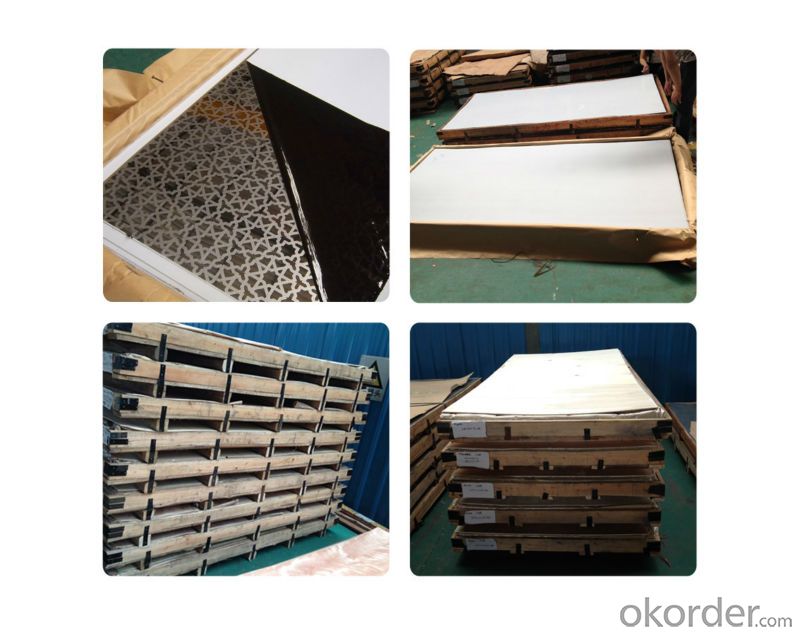
FAQ:
1. What are we supplying?
We are specialized in producing stainless steel coil, stainless steel (plate/sheet), and duplex stainless steel for a prelonged period. We are currently supplying grade of steel of 201/202,304/304L, 310S/309S/316L/316Ti/321, 410/420/430/443/444/409L, and 904L.
2. How Many years experience do we have?
We have been exported to more than 20 countries in the past 15 years.
3. How long do we usually reply your request?
We always reply our customer within 24 hours.
Our company adheres to the tenet of "survival by quality, build brand by reputation, win market by prices and innovate to develop", has developed international markets and the products are well sold in many countries as Singapore, Indonesia, South Korea, Dubai, Pakistan, Sri Lanka, Vietnam, Iran, Malaysia, Mexico, Chile, Brazil, Holland, Italy, Belgium, Russia, Moldova, Paraguay, Uruguay, Germany, Spain, USA etc. More than 40 countries.; commonly we have more than 500tons stainless steel materials in stock; so w can arrange the soonest delivery too; also we hope we will have chance to cooperate with your esteemed company!
- Q:How do you remove oil stains from stainless steel sheets?
- In order to eliminate oil stains from stainless steel sheets, the following steps can be followed: 1. To start, utilize a clean cloth or paper towel to wipe the affected area and remove any excess oil or grease. 2. Combine a mild dish soap with warm water in a bowl or bucket. Dip a soft sponge or cloth into the soapy mixture and gently scrub the stained area using circular motions. 3. For more stubborn stains, a non-abrasive cleaner specifically designed for stainless steel can be employed. Apply a small amount of the cleaner to the stained area and utilize a soft cloth to rub it in. It is important to adhere to the manufacturer's instructions for the cleaner. 4. Thoroughly rinse the area with warm water to eliminate any soap residue. 5. To further restore shine and eliminate any remaining stains, a paste can be created by combining baking soda and water. Apply the paste to the stained area and allow it to sit for a few minutes. Then, gently scrub with a soft cloth or sponge. Rinse with warm water and dry with a clean towel. 6. To prevent future stains, it is advisable to consider using a stainless steel cleaner or polish. These products can aid in maintaining shine and making it easier to clean any spills or stains that may occur. It is essential to always test any cleaning product or method on a small, inconspicuous area of the stainless steel sheet before applying it to the entire surface. Additionally, it is important to avoid using abrasive materials or scrub brushes with harsh bristles as they can cause scratches on the stainless steel.
- Q:What are the different types of stainless steel sheet surface patterns?
- In various industries, different types of surface patterns are commonly used for stainless steel sheets. Here are some of the most prevalent patterns: 1. The most commonly used pattern for stainless steel sheets is the No. 1 Finish. This pattern is achieved by hot rolling the sheet, resulting in a dull, rough, and non-reflective finish. 2. The No. 2B Finish has a smooth and moderately reflective surface. It is obtained through cold rolling the stainless steel sheet and then annealing it in a controlled atmosphere to eliminate any scale or oxide buildup. 3. Similar to the No. 2B finish, the No. 3 Finish has a slightly coarser and less reflective surface. It is often used for decorative purposes, particularly in architectural applications. 4. The No. 4 Finish is a popular choice for stainless steel sheet surfaces. It showcases a brushed appearance with fine parallel lines running in one direction. This brushed finish is achieved by using abrasive belts or brushes to create a consistent pattern on the surface. 5. The No. 8 Mirror Finish provides a highly reflective, mirror-like surface, as the name suggests. It is achieved by polishing the stainless steel sheet to a high shine using progressively finer abrasive materials. 6. The Embossed Finish displays a raised, textured pattern on the surface of the stainless steel sheet. It can be achieved through various methods, such as embossing rollers or heat transfer. 7. The Bead Blasted Finish offers a uniform, matte appearance with a slightly rough texture. It is created by bombarding the stainless steel sheet with fine glass beads at high pressure, resulting in a consistent and non-reflective surface. Each of these stainless steel sheet surface patterns possesses distinct aesthetic and functional qualities. The choice of pattern depends on the specific application and desired outcome, whether it is for architectural, industrial, or decorative purposes.
- Q:What are the applications of stainless steel sheets in the construction industry?
- Stainless steel sheets have various applications in the construction industry due to their unique properties and characteristics. Here are some of the key applications of stainless steel sheets in construction: 1. Roofing and Cladding: Stainless steel sheets are widely used for roofing and cladding in commercial and residential buildings. They provide excellent resistance against corrosion, harsh weather conditions, and fire, making them a durable and long-lasting option. 2. Facades and Curtain Walls: Stainless steel sheets are frequently used in the construction of facades and curtain walls. Their attractive appearance, high strength, and resistance to staining and fading make them a popular choice for creating visually appealing and low-maintenance building exteriors. 3. Structural Components: Stainless steel sheets find applications in the construction of various structural components, such as beams, columns, and support systems. Their high strength-to-weight ratio, resistance to deformation, and durability make them ideal for ensuring the structural integrity of buildings. 4. Handrails and Balustrades: Stainless steel sheets are commonly used for designing handrails, balustrades, and guardrails in both indoor and outdoor settings. They offer excellent resistance to corrosion, impact, and wear, while their sleek and modern appearance adds an aesthetic touch to the overall design. 5. Kitchen and Bathroom Fixtures: Stainless steel sheets are extensively used for fabricating kitchen and bathroom fixtures, such as sinks, countertops, backsplashes, and shower enclosures. Their resistance to moisture, heat, and stains, along with their easy maintenance, make them a practical and hygienic choice. 6. Interior Design Elements: Stainless steel sheets are utilized in the construction of various interior design elements, including wall panels, ceiling panels, elevator interiors, and decorative screens. Their smooth and reflective surface, combined with their versatility in terms of finishes and patterns, allows for creating visually appealing and modern interiors. 7. HVAC Systems: Stainless steel sheets are often used in HVAC (heating, ventilation, and air conditioning) systems due to their high-temperature resistance, corrosion resistance, and ease of cleaning. They are commonly employed in ductwork, air handling units, and exhaust systems to ensure efficient and durable performance. Overall, stainless steel sheets offer numerous advantages in the construction industry, including durability, corrosion resistance, low maintenance requirements, and aesthetic appeal. These qualities make them a preferred choice for a wide range of applications, contributing to the overall quality and longevity of construction projects.
- Q:How is stainless steel different from other types of steel?
- Stainless steel is different from other types of steel primarily because of its high resistance to corrosion, making it much more durable and long-lasting. Additionally, stainless steel contains a minimum of 10.5% chromium, which forms a protective layer on the surface, preventing staining and rusting. This unique composition also gives stainless steel its distinctive shiny appearance, making it aesthetically appealing.
- Q:Are stainless steel sheets fire resistant?
- The fire resistance properties of stainless steel sheets are exceptional. With their high melting point and low thermal conductivity, stainless steel can endure prolonged exposure to high temperatures without experiencing significant structural alterations or losing strength. As a result, stainless steel sheets possess remarkable resistance to fire and heat harm. Furthermore, stainless steel does not emit toxic fumes when exposed to fire, further enhancing its safety in environments prone to fires. Consequently, stainless steel sheets are frequently employed in situations where fire resistance is of utmost importance, such as the construction of fire doors, fire escapes, and fire-resistant enclosures.
- Q:What about black titanium stainless steel?
- A black titanium stainless steel plate in recent years a large number of signs used in industry (the back of the board also has some kind of black ash), not the actual titanium plate, the layer of black and no titanium metal components, stainless steel should be black.
- Q:What is the impact resistance of stainless steel sheets?
- Due to its unique properties and composition, stainless steel sheets exhibit a high level of impact resistance. This refers to their ability to withstand sudden loads or forces without suffering permanent deformation or breakage. The material possesses exceptional toughness and durability, rendering it highly resistant to impact. The impact resistance of stainless steel sheets can be attributed to their high tensile strength and ductility. This alloy, which contains iron, chromium, and other elements, contributes to its strength and corrosion resistance. The presence of chromium forms a protective oxide layer on the steel's surface, preventing easy rusting or corrosion. Moreover, stainless steel sheets are available in various grades, each with its own composition and properties. The most commonly utilized grade for impact-resistant applications is 304 stainless steel, which offers good resistance against impact and finds widespread use in industries such as construction, automotive, and aerospace. The impact resistance of stainless steel sheets also depends on their thickness. Thicker sheets tend to possess greater impact resistance due to their increased mass and structural integrity. However, even thinner stainless steel sheets can provide significant impact resistance owing to the inherent strength and toughness of the material. In practical applications, stainless steel sheets are frequently employed in environments where impact resistance is vital, such as in the manufacture of machinery, equipment, and structures subject to high loads or potential impacts. They can endure heavy impacts without cracking, fracturing, or deforming, thereby ensuring the integrity and longevity of the final product. Overall, stainless steel sheets exhibit excellent impact resistance, making them a preferred choice in various industries. Their high strength, corrosion resistance, and durability render them suitable for applications where resistance to impact is crucial.
- Q:What are the different types of colored finishes available for stainless steel sheets?
- Some of the different types of colored finishes available for stainless steel sheets include brushed, mirrored, satin, and antique finishes. Additionally, there are options for powder coating, electroplating, and PVD (physical vapor deposition) coatings that can offer various colors and patterns to enhance the appearance of stainless steel sheets.
- Q:304 stainless steel plate price ups and downs affected by what factors?
- First of all, the stainless steel ingredients, that is, stainless steel raw materials. Stainless steel is a kind of high alloy steel can resist corrosion in air or chemical corrosive medium. His representative steel 13 steel 1Cr17 (430) and 18- Ocr18Ni9 chromium nickel, stainless steel is the main raw material of iron, chromium, nickel, Cr NI, the price of raw materials has decisive effect on the price of stainless steel to the rising prices of raw materials, to support the formation of stainless steel prices, anti pressure, or become power. So we need to pay attention to the stainless steel market, we must pay close attention to the global price of nickel, especially LME nickel price trend, but also on the global iron ore, molybdenum price trend and the latest developments, and other non-ferrous metal prices.
- Q:How do you remove water stains from stainless steel sheets?
- In order to eliminate water stains from stainless steel sheets, the following steps can be followed: 1. Commence by using a soft, damp cloth to wipe the surface of the stainless steel sheet, removing any loose dirt or debris. 2. Combine warm water and mild dish soap in a bucket or bowl to create a solution. Immerse a clean cloth in the soapy water and squeeze out any excess liquid. 3. Delicately rub the cloth over the water stains on the stainless steel sheet, ensuring to follow the grain of the stainless steel to prevent further damage or scratching. 4. For more stubborn water stains, a non-abrasive cleaner specifically designed for stainless steel can be utilized. Apply a small amount of the cleaner to a clean cloth and gently rub it onto the stained areas. 5. Rinse the stainless steel sheet with clean water to eliminate any soap residue. Utilize a separate clean cloth or sponge to wipe away any remaining water. 6. To prevent future water stains, a stainless steel cleaner or polish can be applied to the surface. Follow the instructions on the product label for optimal results. Always remember to test any cleaning solution or product on a small, inconspicuous area of the stainless steel sheet before applying it to the entire surface. This will ensure that the cleaner or polish does not cause any damage or discoloration.
1. Manufacturer Overview |
|
|---|---|
| Location | |
| Year Established | |
| Annual Output Value | |
| Main Markets | |
| Company Certifications | |
2. Manufacturer Certificates |
|
|---|---|
| a) Certification Name | |
| Range | |
| Reference | |
| Validity Period | |
3. Manufacturer Capability |
|
|---|---|
| a)Trade Capacity | |
| Nearest Port | |
| Export Percentage | |
| No.of Employees in Trade Department | |
| Language Spoken: | |
| b)Factory Information | |
| Factory Size: | |
| No. of Production Lines | |
| Contract Manufacturing | |
| Product Price Range | |
Send your message to us
Stainless Steel Sheet with 3mm Thickness
- Loading Port:
- Shanghai
- Payment Terms:
- TT or LC
- Min Order Qty:
- 2000 m.t
- Supply Capability:
- 5000000 m.t/month
OKorder Service Pledge
OKorder Financial Service
Similar products
New products
Hot products
Hot Searches
Related keywords
